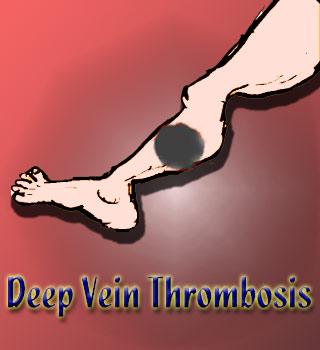
A significant government effort by Surgeon General Dr. Steven Galson, along with the Agency for Healthcare Research and Quality aims to get both doctors and patients identify the emergency in time. The campaign reveals that dangerous blood clots affect nearly 350,000 to 600,000 Americans a year. DVT it seems can masquerade as a simple leg pain.
While announcing the new campaign recently, Dr. Steven Galson mentioned, “It’s a silent killer. It’s hard to diagnose. I don’t think most people understand that this is a serious medical problem or what can be done to prevent it.”
Sitting rigidly for too long can lead to the formation of a blood clot in a deep vein or DVT. It usually forms in the calf, thigh or groin area. The blood clot can be fatal if it breaks loose and moves to the lungs because it can cause pulmonary embolism. This condition blocks an artery in the lungs subsequently reducing oxygen supply.
While the World Health Organization reveals that passengers who travel for four hours or more face double the risk of developing the clots, the recent report claims there’s more. The report suggests that travelers aren’t the only ones at risk. Individuals who are highly prone to developing blood clots include those who have had a surgery recently, take birth control pills or hormone replacement therapy, have cancer, a bad bruise or a broken bone, have been immobile during long trips or are over age 65. Their risks are heightened by smoking and obesity.
Physicians must be additionally informed about a patient’s family history for blood clots. The education campaign brings to light certain symptoms of this chronic condition. They comprise of swelling, shortness of breath, pain while breathing deeply, pain especially in the calf or a warm or red spot along with discoloured skin on the leg.
According to the report, DVT kills nearly 100,000 people every year in the US. Hence experts are laying emphasis on the awareness of DVT and pulmonary embolism. Education involves a 12-page booklet by the Agency for Healthcare Research and Quality. It will give evidence-based guidelines along with more research on the causes, prevention and treatment of DVT.
Plans for the campaign were recently initiated at a meeting of the Venous Disease Coalition.
